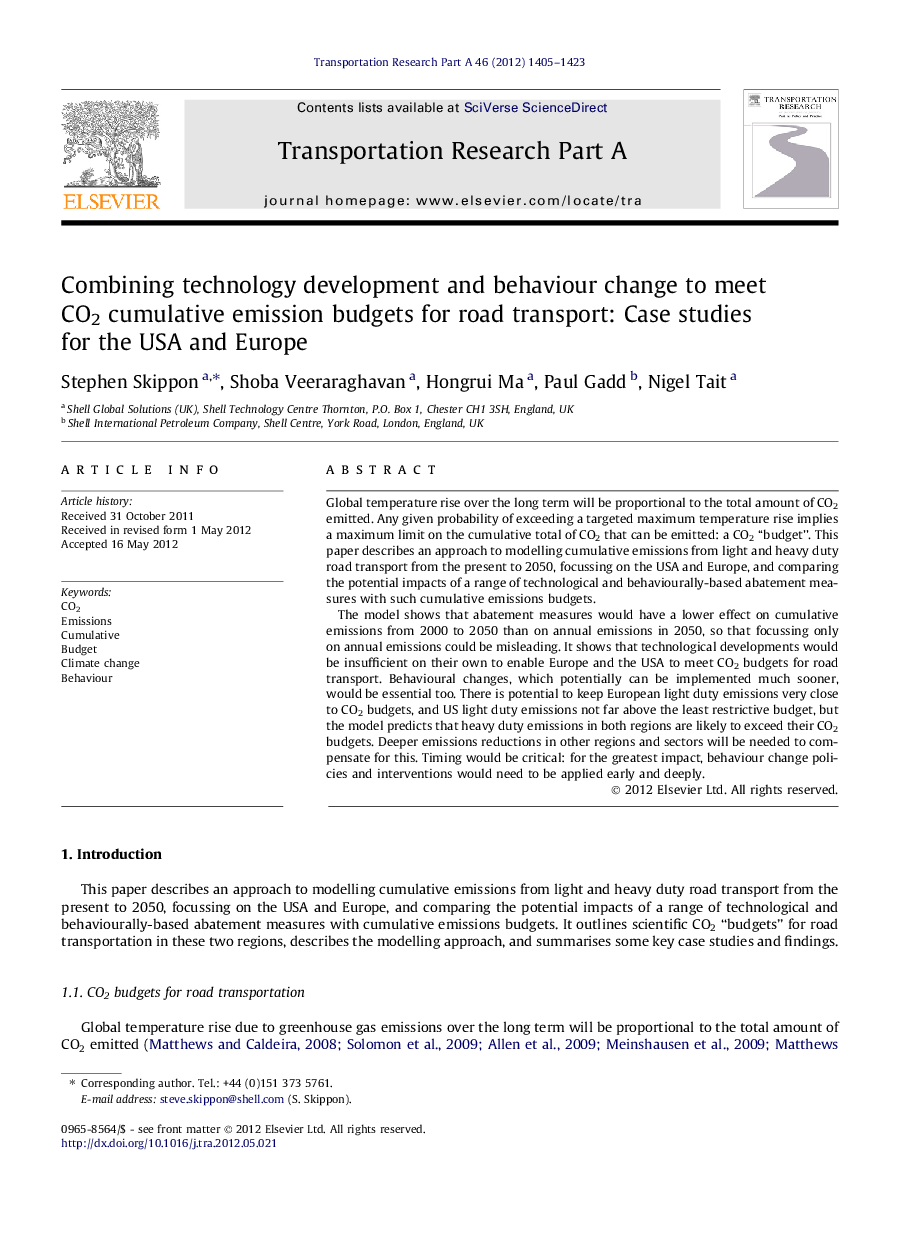| Article ID | Journal | Published Year | Pages | File Type |
|---|---|---|---|---|
| 311309 | Transportation Research Part A: Policy and Practice | 2012 | 19 Pages |
Global temperature rise over the long term will be proportional to the total amount of CO2 emitted. Any given probability of exceeding a targeted maximum temperature rise implies a maximum limit on the cumulative total of CO2 that can be emitted: a CO2 “budget”. This paper describes an approach to modelling cumulative emissions from light and heavy duty road transport from the present to 2050, focussing on the USA and Europe, and comparing the potential impacts of a range of technological and behaviourally-based abatement measures with such cumulative emissions budgets.The model shows that abatement measures would have a lower effect on cumulative emissions from 2000 to 2050 than on annual emissions in 2050, so that focussing only on annual emissions could be misleading. It shows that technological developments would be insufficient on their own to enable Europe and the USA to meet CO2 budgets for road transport. Behavioural changes, which potentially can be implemented much sooner, would be essential too. There is potential to keep European light duty emissions very close to CO2 budgets, and US light duty emissions not far above the least restrictive budget, but the model predicts that heavy duty emissions in both regions are likely to exceed their CO2 budgets. Deeper emissions reductions in other regions and sectors will be needed to compensate for this. Timing would be critical: for the greatest impact, behaviour change policies and interventions would need to be applied early and deeply.
► Model of cumulative emissions from road transport in USA and Europe. ► Impact of technological and behaviourally-based abatement measures compared. ► Focussing only on annual emissions could be misleading. ► Technological developments insufficient on their own. ► Behavioural changes essential too – can be implemented sooner.
